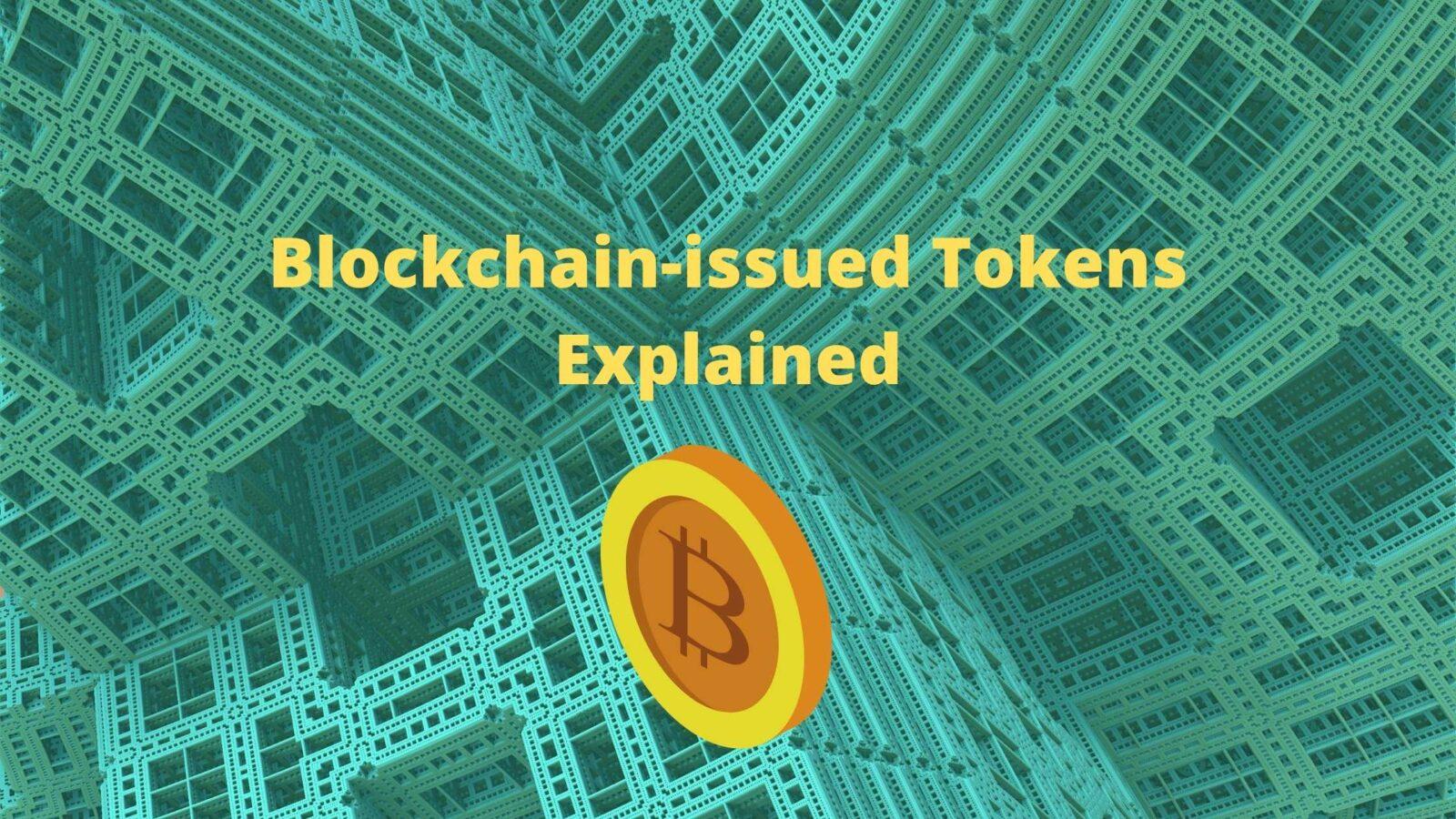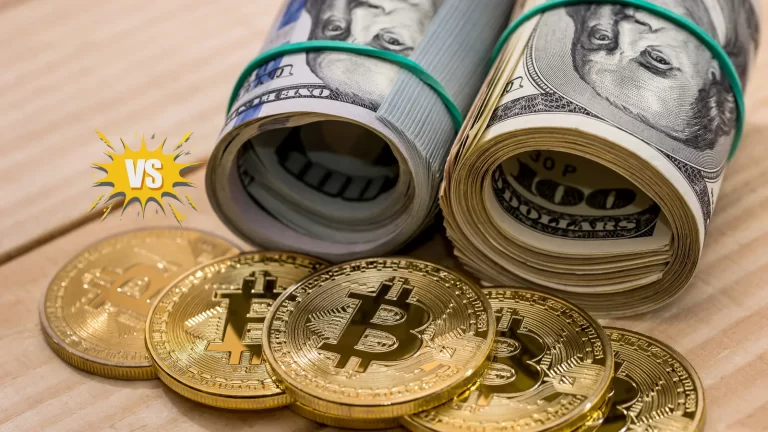
Blockchain Tokens
The concept of asset tokenization involves converting the rights to an asset with economic value into a digital token. A token on the blockchain is used to create, generate and stimulate value. It is a unit of account and a means of exchange. A token can essentially be a digital representation of anything. For instance, a token can represent a stock, bond, option or real-estate asset. A token can also represent an individual’s right to access rights on a blockchain or blockchain-based app. A token on the blockchain can represent any piece of information, like a digital certificate of ownership such as a house or a share in a company, a certificate of credit, patent, provenance data, algorithmic instructions, identity for an IoT device, and so much more.
Currently, there are different definitions of crypto assets, depending on the source and context. Digital assets recorded on a distributed ledger typically derive value from the corresponding assets that they represent. A crypto token or tokenized asset is a digital representation of value or contractual right that is secured by cryptography. This means that the asset is digitally recorded and provides a graphically secured representation of value which is able to be stored and transferred within a distributed ledger. For an in-depth explainer on what tokens are or to fully understand asset tokenisation concepts, read our in-depth explainer here.
Exchange tokens
Exchange tokens are not issued or backed by any central authority and are intended and designed to be used as a means of exchange. They are, usually, a decentralised tool for buying and selling goods and services without traditional intermediaries.
Utility tokens
Utility tokens grant holders access to a current or prospective product or service but do not grant holders rights that are the same as those granted by share or debt like instruments such as security tokens. Utility tokens can be used for accessing the features of a blockchain or decentralized application (DApp). And sometimes utility tokens are used to pre-sell exclusive access rights of a particular DApp to the utility token buyers. Utility tokens are like having tickets for a game and they entitle the holder to entry into the gaming arena. Utility tokens are solely for utility and are not an investment vehicle even though token issuers and purchasers have in many instances considered them otherwise.
With utility tokens:
- Purchasers have access to protocols or utility
- No profits are guaranteed
- Token sales are unregulated
- Investors have few to no protections
- Tokens are available for trading sooner
Security tokens
Security tokens are digital certificates that give ownership to direct or indirect participation in the management of the company; virtual or physical assets, company property or its share; share of the profit of the issuing company; credit commitments; and dividend payment.
Security tokens have specific characteristics similar to share or a debt instruments. A security token is an instrument that provides a right of ownership and entitlement to a share of future profits and cash flows. For instance, a token may represent partial ownership of a specific property or financial instrument. In many ways, security tokens are similar to traditional financial assets such as equities, bonds, futures, options, etc.
Blockchain enables more efficient custody and transfer solutions than those operational in today’s securities markets.
With security tokens:
- Anti-money laundering and Know-Your-Customer checks are involved
- Investors have some protections
- Investors get ownership of the asset
- Can be locked for trading for 3 months to a year
- Investors expect profits
Differences between Stable Coins and Security Tokens
Stable coins linked to fiat currency are a form of stable asset-backed token. Stable coin issuers in this case maintain fiat reserves, so they retain a stable ratio with their chosen fiat currency, which is then matched to the circulating supply of the specific stable coin.
Stable coins are distinctly different from security tokens as they’re not a means of investment. Instead, they are created to represent currencies rather than assets. Stable coins provide an easy exit for investors who trade cryptographic assets on token exchanges, and remain fundamentally distinct from security tokens representing assets.
Why make an asset-backed token?

The tokenization of assets and the creation of new infrastructure to trade and manage digital assets or tokens using blockchain technology is already a reality. Tokenization is revolutionizing the way we approach the ownership and marketability of different asset classes. Real world assets represented as tokens on the blockchain provide access to potentially large addressable markets. Tokens which are backed by external assets can be compared to gold backed paper currencies.
Asset tokenization is beneficial for many reasons. One is that it allows assets to be divided into smaller units so that investors can access high value assets by acquiring a number of units of the assets. Asset-backed tokens allow a higher degree of compliance. Asset-backed and security tokens are, by design, prone to lower volatility than utility tokens and cryptocurrencies. Financial regulators such as the SEC will soon be able to track security tokens much easier than regular securities. This is because the distributed ledger technology ensures a high level of transparency. Regulators may join the blockchain network where the given securities are issued and traded and verify whether the transactions are in line with the requirements.
Asset-backed tokens are blockchain-based units of value that are pegged to real-world assets, such as company shares, real estate, or commodities. This unique group of tokens is unique because they enable investors to store value that is not related to fiat currencies which are inflationary. They allow users to hold ownership rights over a physical and tangible asset in a digital form.
Asset-backed tokens or security tokens are beneficial for increasing the underlying assets’ liquidity. Security tokens ensure higher liquidity, as they permit the fractionalization of ownership of valuable assets so that more investors could own portions of the same asset and make it easier for investors on a worldwide basis to participate. They create ease and speed when assets are being purchased or sold or liquidated at market price. Generally, bonds and stocks are assets with high liquidity, in contrast to assets such as vehicles, real estate, jewellery, art and collectibles which lack access to high trading volumes, trading opportunities on exchanges, and liquidity.
Smart contracts associated with tokenized assets are set to improve access to trading opportunities. Investors with lower capital amounts often can’t afford to take on high risk. Tokens with built in smart contracts can automate due diligence and attract new market entrants in the form of retail investors. A blockchain-based infrastructure aimed at security tokens has potential to attract retail investors, who can now access markets previously inaccessible and are able to invest amounts within their budgets by acquiring fractionalized assets.
A tokenized asset trading market that trades 24/7 and 365 days a year provides enhanced price discovery and reduces price volatility, while also mitigating the risk of sudden price crashes in asset value. Blockchain ensures ownership over a physical asset and assists relevant parties with transaction automation. Over time, institutional investors and platform providers will look to asset-backed tokens as an alternative to the current ecosystem built around traditional assets.
Main Asset-Backed Token Categories
Asset-backed tokens now offer a percentage of digital ownership of an immutable, liquid and trustless representation of company debt or equity. Aside from illiquid assets, the largest use cases for asset-backed tokens are through tokenizing a portion of a large established company’s debt or equity. Anyone may access the blockchain protocol on which an asset-backed token resides, including security token exchanges, and may verify the ownership of the token and the authority of a specified individual to trade.
To establish validity of tokens backed by physical assets requires verification. Auditors who verify the security and trustworthiness of custodial storage facilities for commodities could take advantage of new opportunities using blockchain technology, by utilizing manual assessment methods in conjunction with blockchain tracking.
Debt and equity are already assets which can be traded today, but blockchain makes this process more efficient, which could significantly grow the Security Token Offerings market. Traditionally securities can be stocks which represent part ownership of a public company; options which represent rights to ownership; bonds which include debt financing, issued by private companies, organizations, or states. Exchange-Traded Funds (ETFs) which represent a basket of assets are deemed securities. Real Estate Investment Trusts (REITs) and Index Funds also fall under securities.
Examples of asset-backed token use cases include:
- The issuance of corporate debt or equity via a security token
- Real estate investment trusts (REITs)
- Equity from commercial properties and rental income
- Intellectual property asset backed tokens, such as film licenses and royalty payments
- Accounts payable and receivable, represented by security tokens
Equity
Security tokens will likely reduce the cost of listing a company on the stock market and make it easier to trade less liquid assets such as private equity. A private equity backed token can be developed to feature protocols with inbuilt dividend and profit share functions, transforming an asset class with traditionally low liquidity into a passive income generating investment. This offers startups and VC firms a greater opportunity for funding, cost-savings and profit.
Tokenizing equity, whether private or public presents a new paradigm for investor confidence. While there still remains a high level of risk, the sale of tokenized shares or stocks presents shared interest between the issuer and the fundraising vehicle. In many ways tokenized equity is similar to traditional shares without need for companies to go public in order to cater to retail investors.
Debt
Security tokens make it possible to achieve real-time automated cash flows, better security and significant cost reductions through tokenizing debt issuance. Digitization of debt is optimal since it allows for easy standardization and reusability of smart contract templates for each structured debt offering that is tokenized. The benefit of this is a reduction in costs for back office operations. Tokenized debt allows for access to investment opportunities that were once only available to large institutions.
Debt and equity asset-backed tokens have sometimes been used for raising funds for start-up companies without needing intermediaries such as investment banks and traditional exchanges as is the case when dealing with IPOs.
VC Fund
Tokenization democratizes the process of investing in emerging sectors and enterprises. By pooling together resources from multiple investors, venture capitalists can direct their customers’ funds into new investments.
Tokenization of Commodities
Exchange traded commodities can be converted into security tokens. Commodities which are already traded on third party exchanges can be effectively tokenized. Trading of other exotic commodities like renewable energy is also possible on a blockchain-based exchange.
Illiquid Asset Tokenization
Governments, NGOs, and Trusts can now raise capital for public or heritage projects by tokenizing previously illiquid assets such as monuments
Collectibles tokenization
Asset-backed tokens have the ability to represent exotic and non-fungible assets, like collectibles. Each token is made unique, creating digital scarcity. Participants in the blockchain network are aware of how many are in circulation and their unique features. Smart contracts will enable joint ownership of artworks which can still be displayed publicly and encoded on a blockchain.
Non-Fungible Soft Asset Tokenization
Soft assets, in contrast to hard assets, are intangible assets, which have been traditionally hard to quantify and evaluate.
Intellectual Property Tokenization
IP assets, such as copyright licences, trademarks, patents and royalties from music and media rights generally have low liquidity and currently lack a secondary marketplace to trade on. Blockchain platforms could change this and the benefits would include better liquidity and higher value of IP assets.
Risks of Asset Tokenization
Of course, without risk, there would be no such thing as investing. Fortunately, the challenges facing this new market are likely easy to overcome:
- Security concerns: Technology offers great benefits to this sector of the financial market. At the same time, care must be taken to ensure that the security of data moving in and out of the blockchain is maintained.
- Lack of standardization: As more and more platforms emerge, the lack of protocol standardization will make it difficult for third-party applications such as wallets to interface with platforms.
- Legal enforceability: Legislators are still wrestling with how to best regulate blockchain-based financial services. No doubt, asset tokens will gain more regulatory interest as popularity grows.





